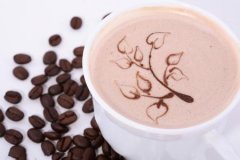Other Ethiopian coffee producing areas
Iron ratio to Bebeca: the iron ratio is 1000 to 1900 meters above sea level and 900 to 1200 meters above sea level. Located on the edge of the Kafa forest, these two areas are the lowest coffee-producing areas in Ethiopia, dominated by bulk commercial beans or formula beans. Tiebi also has a lot of wild coffee. Coffee in this area is seldom used as boutique or single bean.

Jinbi and Lekampur: Lim is northwestbound to reach Jinbi producing area, 1400-1800 meters above sea level. Mainly to sun-drying beans, known as "the poor's Harald". As the name suggests, the flavor of Kinby or Lekampi is similar to that of Harald, but the price is more reasonable. However, Jinbi's bean body is larger (strong bean body is the most important feature of the northwest producing area), which is very different from the southwest and eastern producing areas, and also has obvious flower fragrance. It is a common sun-dried bean in the American boutique coffee industry.
Yilu Gbagbo: 1300-1900 m above sea level, located southwest of Kinby, is the westernmost coffee-producing area of Ethiopia, bordering Sudan. Yilu Gbagbo's beans are moderately sour and mellow, which are mostly used as formula beans and are often transported to Gemma for mixing treatment, which are not fine beans.
Readers interested in Ethiopian boutique beans should pay more attention to the producing areas of Sidamo, Yegashifi (especially rare sun-dried beans), Harald, Lim and Jinbi, whose rich orange and floral aromas are different from those of Central and South American beans. Ethiopia is a treasure trove of coffee genes, and experts estimate that there may be more than 2,000 Arabica subspecies hidden in the country, but the biggest dilemma facing the coffee industry in Ethiopia is that the output is too low. This is related to small-scale farming and organic cultivation, with an average yield of about 800,1200 kilograms per hectare, which is much lower than that in Central and South America (Costa Rica produces an average of two tons of coffee beans per hectare), which shows that Egypt still has a long way to go to increase production. In addition, Egypt's natural low-caffeine coffee trees are being planted, and natural low-caffeine beans will be on the market as soon as two ○○ in nine years.
This will be an unprecedented new product in the history of human coffee, which has a great impact on the coffee market and deserves the attention of coffee fans.
Important Notice :
前街咖啡 FrontStreet Coffee has moved to new addredd:
FrontStreet Coffee Address: 315,Donghua East Road,GuangZhou
Tel:020 38364473
- Prev

Ethiopian coffee producing area
At 1400 to 1800 meters above sea level, Lim continued to the south to reach the Gemma producing area. This area is the main body of Kafa forest, specializing in commercial beans, the annual export volume of more than 60, 000-80, 000 tons, accounting for 1/3 of Egypt's output, is the largest producing area. Gemma is sun-dried beans, which is very common in our market, also known as Ethiopian mocha, but its price is much lower than that of Harald mocha. Jima production
- Next

Cultivating "Coffee Mother Tree" in Holland to achieve Coffee Prosperity
About 16 ⊙○ years ago, the Indian Babudan was infatuated with Middle Eastern coffee and hid seven Yemeni mocha seeds in a hidden bag on his belly to avoid the eyes and ears of Turkish soldiers. After returning to India, he planted coffee beans on Mount Chandragiri Hills in the southwestern state of Kanlataka, outside Babudan's spiritual cave. Due to the climate
Related
- Beginners will see the "Coffee pull flower" guide!
- What is the difference between ice blog purified milk and ordinary milk coffee?
- Why is the Philippines the largest producer of crops in Liberia?
- For coffee extraction, should the fine powder be retained?
- How does extracted espresso fill pressed powder? How much strength does it take to press the powder?
- How to make jasmine cold extract coffee? Is the jasmine + latte good?
- Will this little toy really make the coffee taste better? How does Lily Drip affect coffee extraction?
- Will the action of slapping the filter cup also affect coffee extraction?
- What's the difference between powder-to-water ratio and powder-to-liquid ratio?
- What is the Ethiopian local species? What does it have to do with Heirloom native species?

